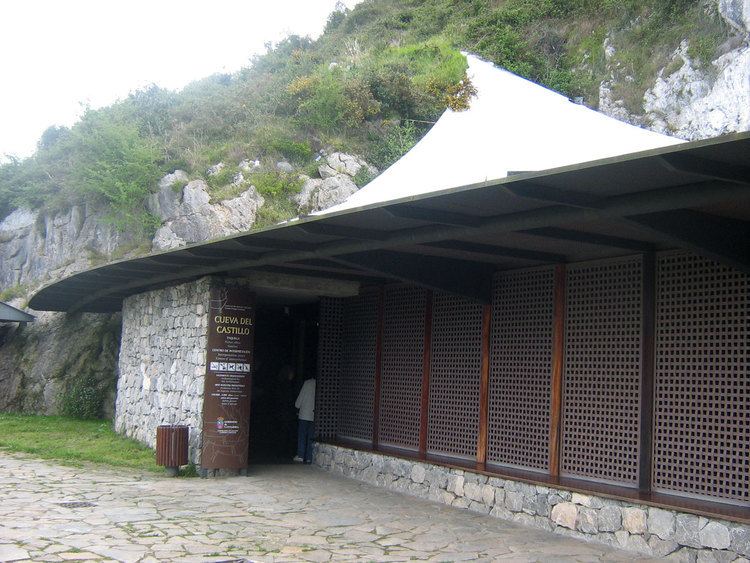Alternate name Cave of the Castle | Type Cave Phone +34 942 59 84 25 | |
 | ||
Similar Cueva de Las Monedas, Cave of La Pasiega, Cave of Altamira, Cave of Altamira and Pale, Tito Bustillo Cave | ||
The Cueva de El Castillo, or the Cave of the Castle, is an archaeological site within the complex of the Caves of Monte Castillo, and is located in Puente Viesgo, in the province of Cantabria, Spain. It contains the oldest known cave art in Europe. Some researchers argue this might even be the oldest known example of artwork in the world and likely to be a product of Homo neanderthalensis. Hand stencils, claviforms (club shapes) and disks made by blowing paint onto the wall in El Castillo cave were found that date back at least 40,800 years, making them older than those of the Chauvet Cave in central France, which are dated to around 39,000 years BP.
As traditional methods such as radiocarbon dating do not work where there is no organic pigment, a team of British, Spanish and Portuguese researchers led by Dr. Alistair Pike of the University of Bristol dated the formation of tiny stalactites on top of the paintings using the Uranium-thorium dating technique, thus obtaining a minimum age for the art. Where larger stalagmites had been painted, maximum ages were also obtained.
The archaeological stratigraphy has been divided into around 19 layers, depending on the source they slightly deviate from each other, however the overall sequence is consistent, beginning in the early Aurignacian, around 44,100 years ago and ending in the Bronze Age.
Cueva del Castillo was discovered in 1903 by Hermilio Alcalde del Río, a Spanish archaeologist, who was one of the pioneers in the study of the earliest cave paintings of Cantabria. The entrance to the cave was smaller in the past and has been enlarged as a result of archaeological excavations.
Alcalde del Río found an extensive sequence of images executed in charcoal and red ochre on the walls and ceilings of multiple caverns. The paintings and numerous markings and graffiti span from the Lower Paleolithic to the Bronze Age, and even into the Middle Ages. There are over 150 depictions already cataloged, including those that emphasize the engravings of a few deer, complete with shadowing.
